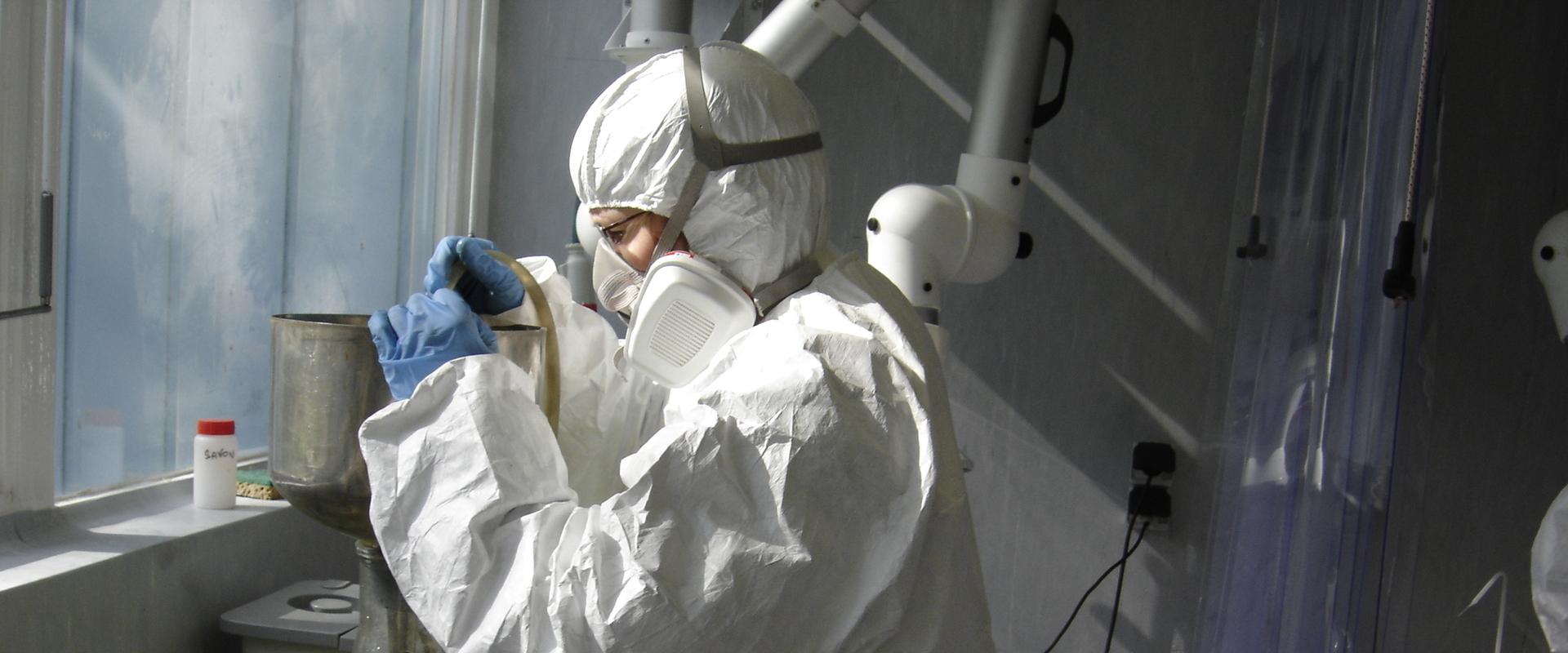High-resolution characterisation of polluted sites
Transcription
Tools for the high-resolution characterization of polluted sites: Speed, Flow and Concentrations
Due to the heterogeneous nature of the subsurface, water flows and the spread of contaminants through the subsurface are also heterogeneous. Whether it's to define the extent of a plume, to determine the best means of monitoring pollution, or to select a remediation method for underground water, a detailed characterization is often necessary. This characterization could involve a vertical discretization of water flows. Beyond traditional spinners, water flow in boreholes can be measured with a range of new tools. Some of these tools can determine flow direction. For the vertical discretization of contaminants, recently developed tools can glean data from boreholes using a suction strainer. By combining these tools, we can calculate the flow of contaminants. The ADEME supported research on the performance capacities and practical uses of these tools, whose operating principles will be explained here. These tools include innovative instruments developed by French entities and commercially available tools.
Groundwater Velocity Characterization Tools
The Direct Velocity Tool
The DVT principle is based on the phenomenon of dilution to calculate groundwater flow. It is inserted in the piezometer using an extension bar that can reach up to 20 m below ground. A tracer is injected at a known speed and mixes with water entering the tool's reservoir window. The concentration of the mix allows us to calculate the water's Darcy flux, or groundwater flow rate.
The Velocimeter or Colloidal Borescope
The Velocimeter measures flow direction as well as the Darcy flux of groundwater in boreholes at a given depth. The system features a camera for observing the particles present in boreholes. The software calculates their average size, number, speed and direction.
Vertical Flow Characterization Tools for Boreholes
The Flowmeter or Heat-Pulse Flowmeter
The Flowmeter measures vertical flow. It is ideal for measuring low vertical flow rates but can also be used qualitatively for higher flow rates, to calculate the amount of water being pumped in, for example. Electric pulses are applied to the grating, heating the surrounding fluid. Depending on flow direction, one of the thermistors detects the warmest water thus indicating its direction. The time to reach the thermistor provides the flow rate.
Contaminant Concentration Characterization Tools
The Controlled Sampler or Pressurized Pneumatic Sampler
This is used to sample water at a given depth by aspiration via the water column or after a dynamic purge. Before getting started, the sampler is pressurized to prevent water from entering. Upon reaching a given depth, the pressure is released and water enters the sampler. Then it is pressurized again and brought back to the surface. The water is recuperated after depressurization.
The Valved Low Flow Sampler
This system consists of a pneumatic bladder pump with a suction strainer located between two hydraulic valves. This pump functions via fill-charge cycles and is remotely controlled. The sample flow rate can be set and very low rates obtained.
The Targeted Sampler
This tool isolates a sample area between two valves at a given depth. Using a pump located above the sample area, it is possible to sample groundwater at multiple depths along a column of water. The sample flow rate is between 0.5 and 3 L per minute.
Contaminant Flux Characterization Tools
iFLUX Sampler
The iFLUX sampler consists of rigid cartridges. There are several types for different uses. The cartridges measure groundwater flow thanks to their tracers. Other cartridges measure contaminant mass flux. When the system is removed, the quantity of tracers remaining is measured, to determine the Darcy velocity or groundwater velocity. The contaminant mass adsorbed is measured. And the contaminant mass flux can be calculated. Thus the average concentration for the exposure duration can be calculated with the data from both cartridges.
Conclusion
The tools used in this study allow us to visualize vertical heterogeneity in flux rates, vertical flows in boreholes, and/or the concentration of pollutants in boreholes. The choice of tool depends on characterization goals, site conditions and the type of borehole. These tools can combine to calculate contaminant flux. The tools presented here will be tested on two sites. There will be a data sheet for each. Don't hesitate to contact us with your questions.








The HRSC project (High-Resolution Site Characterisation), co-financed by ADEME, carries out in-situ tests of innovative tools for characterising polluted sites. This film presents some of the tools deployed on an oil-polluted site in 2019, in order to measure the speed and direction of the groundwater and carry out multi-level measurements of contaminant concentrations and flows in the groundwater.